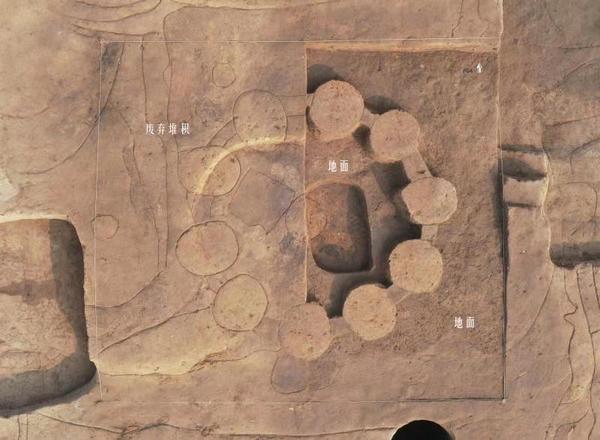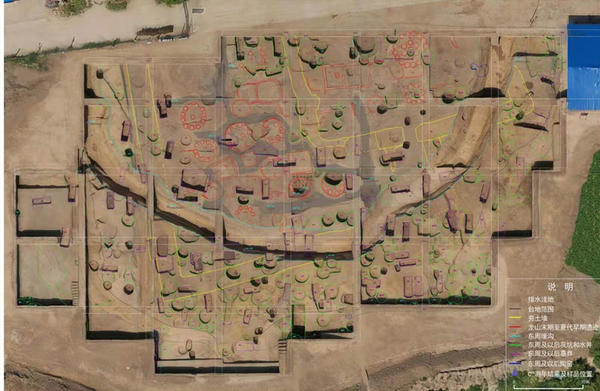In China's written documents, the Chinese character "仓廪" (granary) has a very long history. The oracle bone script of "仓" in form is like an underground cave covered with a conical roof featuring rain, wind and sand-proof functions. In history, the last king of the Shang Dynasty (1600 BC-1046 BC) built a large granary, called "Juqiao" (钜桥). In July 2019, the Shizhuang Site was unearthed in Shizhuang village of Zhoukou city, Central China's Henan province. It is China's earliest facility of centralized grain storage, unveiling the "national granaries" of China's first dynasty -- the Xia Dynasty (2070 BC-1600 BC).
Click on the video
On a man-made foundation covering an area of about 5,600 square meters in Shizhuang, the remains of 29 granaries were discovered. Archaeologists not only found the remains of corn and millet at the bottom of the granaries, but also those of reed bed or knitting fabric which are believed to be the direct bedding.
The Shizhuang Site in Huaiyang, Zhoukou. [Photo/Henan Daily]
Overally, the foundation is surrounded by a wide trench, not deep. At its center lies a house with living function, with 29 granaries distributed around. The number of the granary remains discovered at this area topped that of other remains such as ash pits, pottery kilns, tombs, etc. Experts said that the site was a special settlement in history with a clear structure and a single function.
The Shizhuang Site in Huaiyang, Zhoukou. [Photo/Henan Daily]
Cao Yanpeng from Henan Institute of Cultural Relics and Archaeology who heads the archaeology of the Shizhuang Site said, "Since both the rammed earth enclosure and the granaries were built on the foundation, it was planned purposefully. The carbon-14 dating of the charcoal in the granaries shows they can be traced back to about 4,000 to 3700 years ago, belonging to the early Xia Dynasty. It is China's earliest facility of centralized grain storage, indicating that there might be a relatively complete and strict system for grain storage and management at that time."
Cao noted that the emergence of Shizhuang shows that early China had divided the functions of settlements, which is of great value for refreshing the current understanding of early China's grain management, social structure, administration, governance capacity, etc. (Chinese source: Henan Daily App Reporter: Li Yue Huang Hui Translator: Zhao Hanqing Video: Wang Junyi Proofreader: Li Wenjing)
Related reports
The Xia Dynasty Travel Episode II The Dongzhao Site in Zhengzhou: 'Bridgehead' of the Xia Dynasty
The Xia Dynasty Travel Episode V The Puchengdian Site: Two Ancient City Ruins Discovered
The Xia Dynasty Travel Episode VI The Xinzhai Site in Xinmi: The First Capital of the Xia Dynasty?
The Xia Dynasty Travel Episode VII The Yuzhuang Site: Unveiling the Noble Life 4,000 Years Ago
The Xia Dynasty Travel Episode IX The Erlitou Site in Yanshi: A 'Dynasty' in a Small Village




